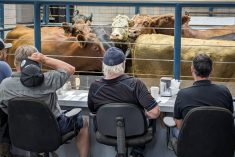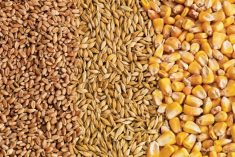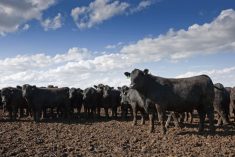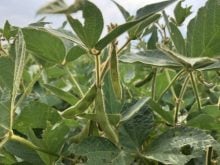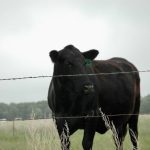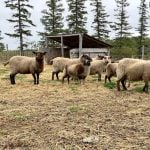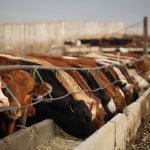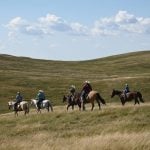Compared to last week, western Canadian yearlings traded steady to $2 higher with exceptional demand noted on steers over 700 pounds. Calf values were mixed in Alberta with markets trading $2-$4 on either side of unchanged; however, prices were steady to $4 higher in Saskatchewan and Manitoba.
Small groups of various quality characterized the feeder market last week. Lower-flesh backgrounded cattle were in high demand. Major feeding operations were the main buyers across all weight categories; however, lower-quality stragglers and singles were left to the smaller operator. Large-frame calves in the eastern Prairie regions were well bid from Ontario buyers. Pasture conditions are quite favourable across the Prairies but the market is in hangover mode from the past couple of years’ drought-like conditions. There are quite a few pastures in Manitoba and Saskatchewan with no cattle on them. Feedlots shopping for feeders in the deferred positions are noticing the tighter supply situation, especially in the 700- to 800-lb. weight category. Feed grain prices are under pressure for new-crop positions, enhancing the margin structure for the fourth quarter of 2022 and first quarter of 2023.
Read Also

JBS profit falls amid still-challenging US market environment
JBS, the world’s largest meat company, reported a net profit fall in the third quarter in spite of a rise in global net sales amid a still-challenging beef market environment in the U.S., according to an earnings statement on Thursday.
North of Red Deer, a small group of mixed steers coming on light barley ration with full health data weighing 945 lbs. were valued at $192 and mixed heifers weighing 840 lbs. traded hands at $186. West of Edmonton, larger-frame lower-flesh mixed steers with detailed records averaging 840 lbs. dropped the gavel at $210. Southwest of Winnipeg, Angus-blended steers weighing 815 lbs. were quoted at $215. Just north of Lethbridge, a small group of mixed steers on forage diet averaging 930 lbs. were valued at $201 landed in the feedlot.
North of Saskatoon, tan steers fresh off grass weighing 748 lbs. reportedly moved at $235 and black and red heifers averaging 755 lbs. sold for $211. In central Alberta, a small group of Simmental-blended steers weighing 650 lbs. were quoted at $243 and mixed heifers weighing 675 lbs. sold for $202. In southern Manitoba, a small group of mixed steers weighing 620 lbs. were valued at $245. Southeast of Saskatoon, tan steers weighing 525 lbs. were reported at $255 and similar-quality heifers weighing 515 lbs. were valued at $218.
Alberta packers were buying fed cattle for first half of August at an average price of $292 delivered, steady to $2 lower than seven days earlier. There is a backlog of market-ready supplies in Western Canada which may be tempering the upside in the feeder market. There is a bullish trend in the feeder market; this much is sure.
— Jerry Klassen is president and founder of Resilient Capital, specializing in proprietary commodity futures trading and market analysis. Jerry consults with feedlots on risk management and writes a weekly cattle market commentary. He can be reached at 204-504-8339 or via his website at ResilCapital.com.






